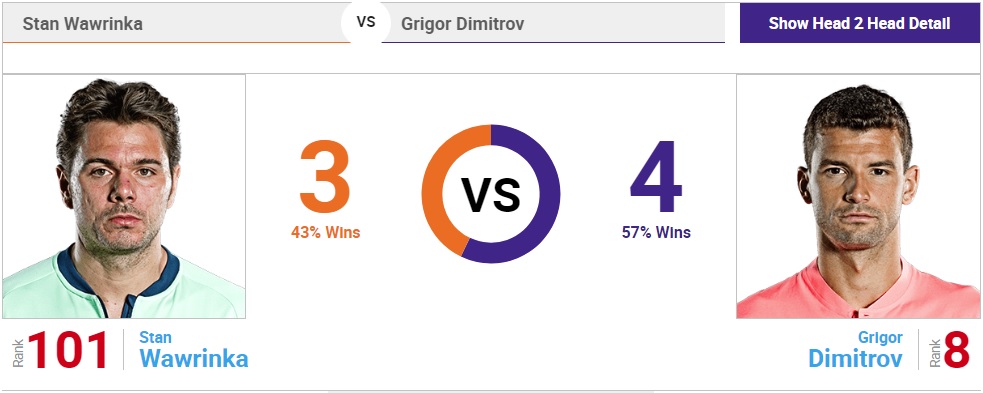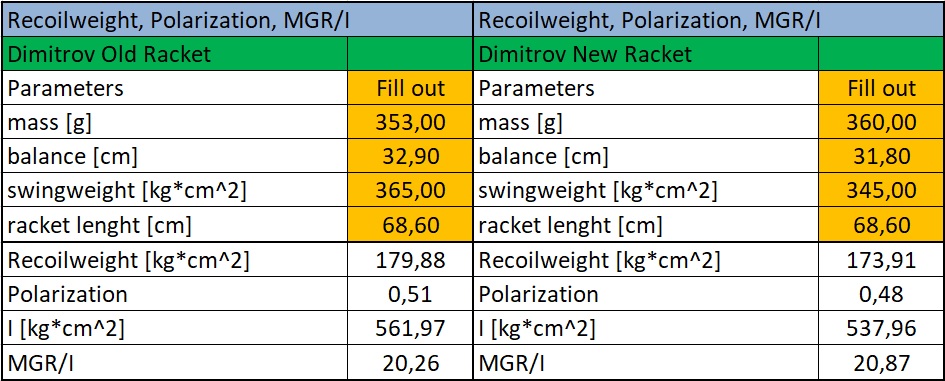Watch out for Dimitrov at the US Open 2018 and forward. I don’t want to be a post-dictor (a person who predicts what already happened), so I’m pointing this out ahead of the blockbuster first round of the US Open between Stan Wawrinka and Grigor Dimitrov. It’s a repeat of the 2018 Wimbledon first round where Wawrinka got the better of Dmitrov in close 4 sets. But this time around things are different for Dimitrov. Here’s why I think things will start getting better for Dimitrov when he get’s used to the new racket. Will it be during the US Open 2018 or later down the line? I just hope he stays with the racket and works on mastering it.

The first time I’ve seen Dimitrov play after Wimbledon was at Cincinnati 2018 against Novak Djokovic. Something felt different about his game from the get-go. The strokes had a bit more potency and what stood out the most was Dimitrov’s slice. It was way more penetrating than Dimitrov’s usual »floaty« backhand slice. Perhaps, he was also using it more than he should, which was a sign to me that Dimitrov wasn’t 100% comfortable with the new racket jet. This will change with time, but despite that, he dominated the first set against Novak and was a break up in the second. Some crucial misses, which signal that he does not yet fully trust the racket, then turned the match in Djokovic’s favour. With time and practice that will change, just like it did for Djokovic when he changed racket for the 2018 season. You can read about that here.

I used Dimitrov and Federer to illustrate the difference between different MGR/I specifications, but now, that doesn’t hold true anymore, but let’s take a look how it was before:
»I’m talking about Roger Federer and Grigor Dimitrov. It’s true that Grigor is trying to play like Roger, but everything is just so much harder for him and he has to work a lot harder even though he is bigger and stronger. And when they play, Roger can easily overpower Grigor. Why is that? It’s the racket, more precisely the MGR/I value. In short, the MGR/I determines how »easy« is it to play with a given racket, one could say how forgiving it is. The Federer and Dimitrov comparison is the perfect example of what customizing for MGR/I can do for your game if you do it right. I should also mention that Dimitrov is reportedly testing and using a racket with a higher MGR/I in the summer of 2018. Supposedly, he is using a variant similar to Roger’s racket. Let’s look at their numbers before Dimitrov switched rackets:
- Roger Federer MGR/I: 21, 17
- Grigor Dimitrov MGR/I: 20, 25
To see how I got this number continue reading below. Now, this might not seem like a big difference, but the MGR/I ranges from around 20 to 21,5 for most rackets. Off course there are also other differences at play, like a bigger head size (93 to 97) a thicker and stiffer beam and a different string pattern (18/17 to 16/19), but I believe that the crucial factor is the bigger MGR/I number, especially when it comes to playing well and trusting the racket in high-pressure situations.«
If you want to know the impact of MGR/I on one’s game, check out the chapter on MGR/I under Educational tools. Now let’s take a look at Dimitrov’s number before and after the switch.

His swingweight is an estimation from the balance and weight that he supposedly uses, the visible lead tape on the sides fo the racket and the specifications of Roger’s racket. The estimated new MGR/I value is 20, 87. A big change for Dimitrov and I believe a good one.
Off course there are also other changes at play, like a bigger head size (93 to 97) a thicker and stiffer beam and a different string pattern (18/17 to 16/19), but I believe that the crucial change is the increased MGR/I number.
I’ll keep a close eye on Dimitrov at the US Open 2018 and in the following months and seasons. It’ll be fun watching him being released from the shackles of the old racket and mastering the new setup.